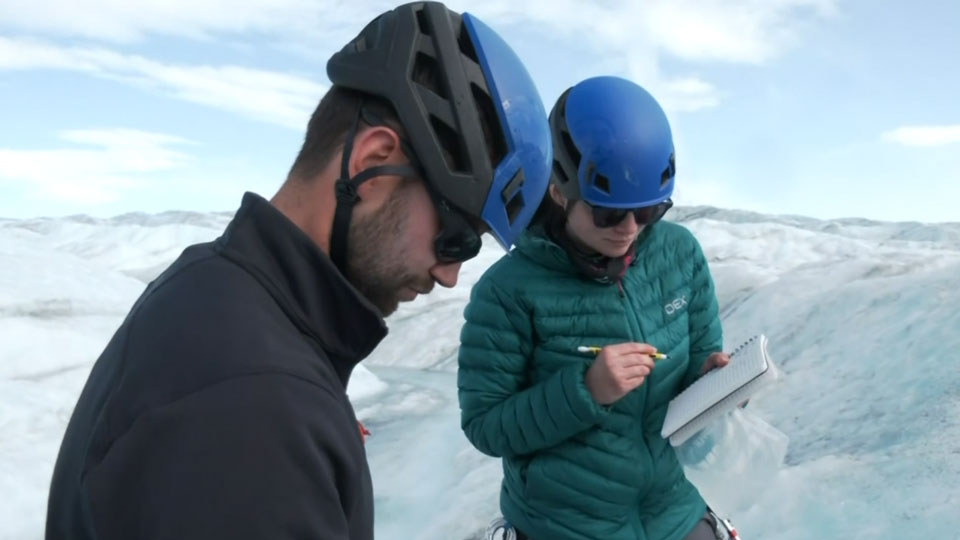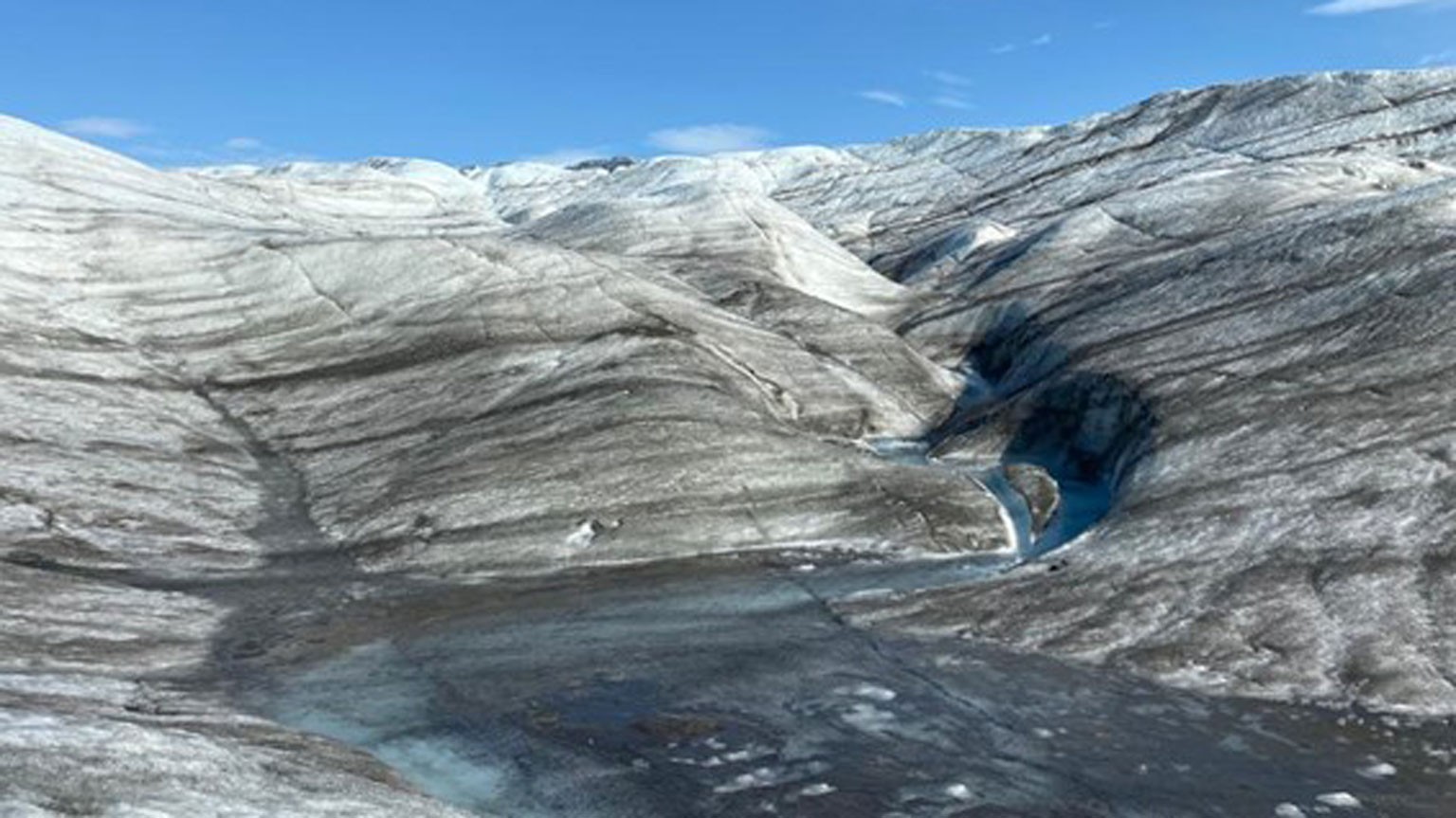Greenland is the largest noncontinental island in the world, but the population, at just over 56,000, is tiny. Nearly 90 percent of the people are Inuit natives, and the warming planet poses immense risk to their homeland, of which two-thirds lies in the Arctic Circle.

About 80 percent of Greenland is covered by a vast ice sheet, but it's melting fast. Samantha Buzzard, a glaciologist from the University of Cardiff, says the volume of ice lost per day in both Greenland and Antarctica is "over 400 times the volume of the pyramids of Giza."
We met Buzzard in August near Kangerlussuaq, a town just north of the Arctic Circle. The effects of climate change were abundantly clear in the form of meltwater rushing along the ice sheet. These ever-widening streams eventually form vast sub-glacial lakes.
"We've only really known they were there quite recently," says Buzzard. "So we're trying to understand how they fill and drain."

She says studying these subterranean bodies of water is crucial to learning more about how the warming climate is affecting Greenland's ice sheet and causing sea levels to rise.
And the clock is ticking. A Danish report in 2022 said the ice sheet will lose 110 trillion tonnes this century, raising our oceans by 27 centimeters ― "Even if the whole world stopped burning fossil fuels today."
And with such drastic change on the horizon, "low-lying cities such as Tokyo could be in big trouble," says Buzzard.
Loss of ice, loss of culture
The effects of climate change are also starkly clear in the waters around Greenland, and the fishing industry ― which accounts for a whopping 90 percent of exports ― is being forced to adapt.
The periods in which sea ice form are getting shorter, and the sheets themselves are becoming thinner and thinner. This could actually be a boon for people who fish on boats, but others who engage in a traditional method using sled dogs fear their livelihoods will soon be gone for good.

A report in 2019 showed that almost 80 percent of Greenland's residents believe traversing the ice is growing more dangerous, while 67 percent think climate change will eventually be of harm to the dogs themselves.
Sled fishing is declining in Greenland, but global warming will only cause that trend to accelerate. In the coastal town of Ilulissat, a 25-year-old fisherman lamented not having the chance to try the tradition for himself.
But some veterans of the industry are less despondent. Sled fishing "has smashed my legs," said one man. "And the others I work with also have bad legs. Some use crutches or a walking frame."
Another group of older fishermen we spoke to broadly cheered the shift from sled to boat, with one even saying his hauls are on the up.
Mineral firms see big opportunity
Less sea ice could even catalyze a drastic industrial shift. Arctic trade routes are now easier to navigate, and more foreign firms are looking to tap into Greenland's rich mineral reserves.
They include Australian mining company Energy Transition Minerals (ETM), whose Kvanefjeld Project in the southern town of Narsaq seeks to extract an abundance of rare-earths used in electric cars and wind turbines.
Company officials say there are enough reserves to keep the mine running for at least 37 years.
But the work has been on hold since 2021, when Greenland's government banned any mining activities that could result in uranium leaks.
Still, ETM remains hopeful about a restart, and company officials insist the project could generate $240 million annually for Greenland's economy.

As things stand, Environment Minister Kalistat Lund welcomes mining in uranium-free areas. But when it comes to Narsaq, "We have fishing and farming industries down there," he says. "And so the environment question is number one."

